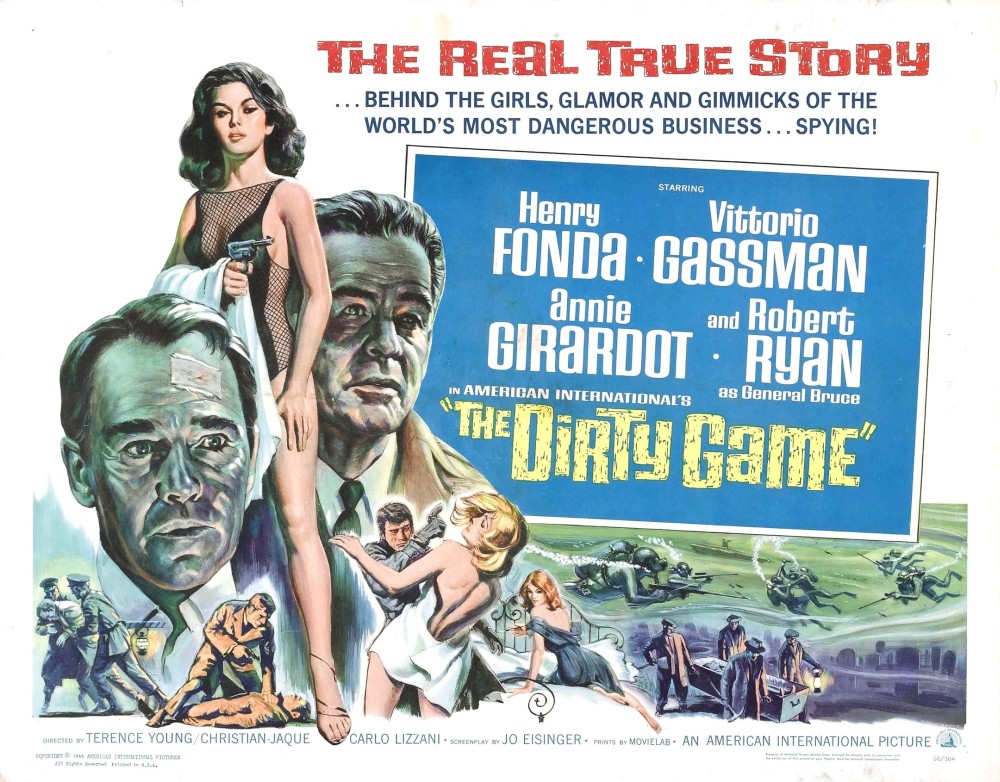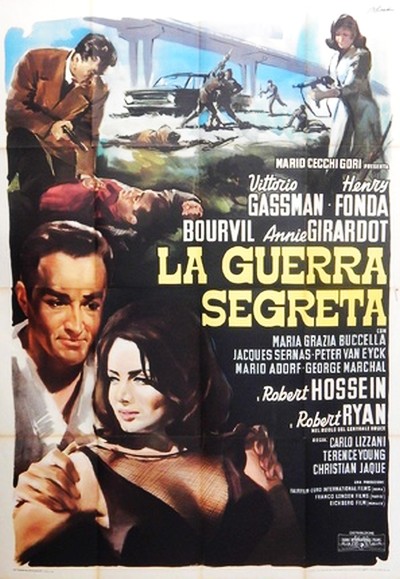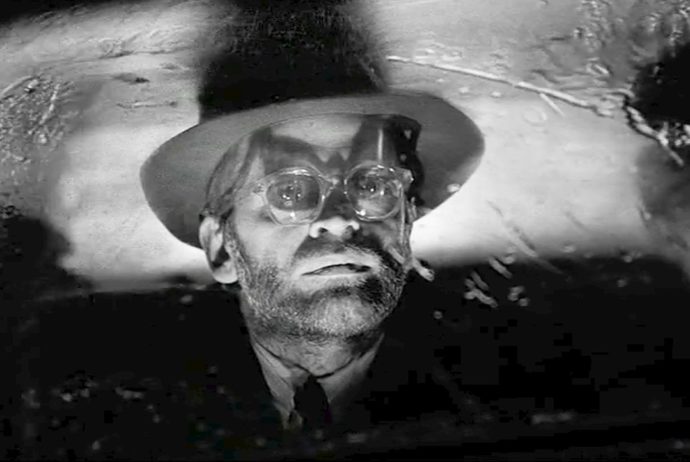Dir: Christian-Jaque, Carlo Lizzani, Terence Young, Werner Klingler (uncredited)
Star: Vittorio Gassman, Bourvil, Robert Ryan, Klaus Kinski
a.k.a. The Dirty Game
This multi-national anthology seems to be intended as a “grounded” counterpoint to the more excessive spy thrillers common in the sixties. The James Bond films are the most well-known of these, though are certainly far from the only ones. There was an entire “Eurospy” genre, driven by the success of 007, and we’ve already covered some of them already, including Coplan Saves His Skin and Only the Cool. These took various approaches, from the serious to comedic spoofs, and from the down-to-earth to entries that made even the more ludicrous entries in the Bond franchise seem sober by comparison. Given their inspiration, the presence of Young as a director of a segment here is interesting, since he helmed three official 007 entries: the first “proper” adaptation Dr. No, plus From Russia With Love and Thunderball.
Here, there are three separate stories, unfolding over the space of slightly more than two hours in the fullest version (there’s a 133-minute director’s cut according to the IMDb). However, the American release was severely edited, running under ninety minutes, and with the order of the anthology’s parts changed. By most accounts, it’s an almost incomprehensible hack job. A “proper” version has never been released officially in a version compatible with English-language viewers. A fan-assembled edition exists, based on a 123-minute cut of the movie released in Italy on DVD. This fan edit combined audio from the shortened English dub when appropriate – e.g. when American characters are speaking, with subtitles for the foreign language dialogue, spoken in German, French or Italian. Props to the creator, for sure. Just a shame it’s not a better film, in my opinion – especially from the Kinski front.

It begins with Young’s segment, in which deep-cover agent Dimitri Koulov (Henry Fonda) breaks through the Berlin Wall into the Western-controlled sector. He demands to see his handler, General Bruce (Ryan), but he’s unavailable, being out of town until the next day. Koulov is put up in a hotel overnight, but the Communists have followed his movements into West Berlin, and are keen to make sure he doesn’t live to meet the General. The second installment is set mostly in and around Djibouti in East Africa, where a plot unfolds posing a threat to a pair of nuclear submarines which are scheduled to rendezvous just off the coast. The French send agent Lalande (Bourvil) to track down and neutralize the scheme. Finally, the Italian segment centers on a scientist who has developed a new fuel source, but refuses to co-operate with either side. Perego (Gassman) is tasked with kidnapping the man, to help him see sense.
To start by getting the Kinski element out of the way, he plays an unnamed Russian agent, part of the team sent into West Berlin to stop Koulov from giving up his information. Their initial plan is to ambush the defector as he’s being transferred to the hotel, but this is foiled, more by luck than direct action. The team is therefore forced to try and assassinate Koulov in his room, first through a sniper, then by sending a killer onto his window-sill and finally into the building. Weirdly, their target doesn’t bother… oh, I dunno, telling anyone about this, just wrapping a towel around his wounded arm, and accepting it as a fait accompli when the room phone and bell service doesn’t work. Leaving the room, to make the assassin’s job at least slightly harder, apparently never crosses Koulov’s mind.

Kinski (top) is almost unrecognizable, sporting a severe five o’clock shadow and coke-bottle glasses. He doesn’t get to do much either, barking out a couple of commands but generally overseeing the murderous efforts of his underlings. It’s a bit of a surprise, because he was certainly a known actor by this point in the mid-sixties, having appeared in a slew of the Edgar Wallace krimis. You’d think they might have found a bit more for him to do. Mind you, the entire Berlin sequence is done and dusted in less than half an hour, Koulov having left a cryptic message on the mirror that then moves the plot on to the French leg of the movie. It never returns to Germany, and Kinski collects his payment on the way out.
The rest of the film is, I would say, steadily downhill. The French portion is at least somewhat interesting, mostly for Lalande being strongly against type as a spy, looking more like a chartered accountant. However, he seems to uncover the details of the plot against the submarines with almost ludicrous ease, and there’s also too much scuba-diving footage. I get that this was novel stuff at the time, but it seems slow and uninteresting now. [Though he wasn’t responsible for it here, Young’s other 1965 film, Thunderball, also falls into the same trap] It does still have considerably more to offer than the Italian installment, which borders on the incomprehensible. Though to be fair, it could well be that I was struggling to keep my attention engaged. There are a lot of moving parts, and it often seems unclear who is doing what to whom, and why.
I’m generally not in favor of hacking great chunks out of foreign films to make them palatable to a domestic audience, But I must admit, I kinda see why American International Pictures decided to take that route here. In its original format, all of the stories struggle to achieve much: I would say they’d have been better off doing them as three separate feature films, and giving each the room to breathe they desperately need. The performances generally aren’t bad, despite the near-criminal under-use of Kinski, and I understand what they makers were trying to accomplish. As the poster tag-line puts it, “The real true story behind the world’s most dangerous business: spying.” However, on the evidence of this, they’d have been better off printing the legend.
